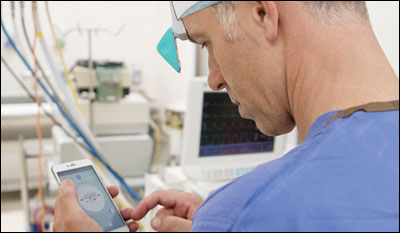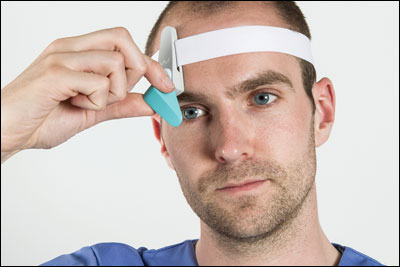Please note, this page has been archived and is no longer being updated.
Walking out of the Den back in 2009 with empty pockets and heads held high, Swansea University lecturers Dr David Williams and Dr John Dingley went on to partner with Timesco and successfully bring to market ShakerScope, a kinetically powered light source which enables essential medical instruments to be used in difficult locations where batteries and mains power supplies are not available.
 In addition to being employed as consultant anaesthetists at Morriston Hospital and lecturers at Swansea University’s Medical School, the pair founded Bay Innovations Ltd, with support from Swansea Innovations, a wholly owned subsidiary of Swansea University, set up to support the commercialisation of University research. Utilising their spare time and garden sheds, they have designed, manufactured and commercialised a range of award winning medical devices.
In addition to being employed as consultant anaesthetists at Morriston Hospital and lecturers at Swansea University’s Medical School, the pair founded Bay Innovations Ltd, with support from Swansea Innovations, a wholly owned subsidiary of Swansea University, set up to support the commercialisation of University research. Utilising their spare time and garden sheds, they have designed, manufactured and commercialised a range of award winning medical devices.
The latest product, Vivi, is a compact, lightweight and affordable head mounted display that enables anaesthetists, nurses and paramedics to continually monitor patient vital signs and rapidly recognise abnormal changes such as heart rate, blood pressure and oxygen levels.
The novel fold away product has a display that can be configured to individual requirements using a Smartphone app. It connects to medical equipment via Bluetooth technology, projecting real time patient data into the peripheral vision of a clinician’s eye.
Dr Dingley said: “Anaesthetists carry out a number of procedures having just anaesthetised a patient that require full concentration such as putting in specialist intravenous lines and performing nerve blocks, which sometimes require ultrasound guidance. These activities are distracted by looking away to keep timely checks on a patient’s vital signs.
“Vivi provides an effective solution to this problem, enabling clinicians to visually perceive patient vital signs data within their field of view, improving response time and allowing more attention to be directed towards patients and the surgical field.”
 Dr Gerry Ronan, Head of Swansea Innovations added: “It’s incredible what John and David have accomplished and it has been a pleasure to support the commercialisation of their growing range of cost effective medical products.”
Dr Gerry Ronan, Head of Swansea Innovations added: “It’s incredible what John and David have accomplished and it has been a pleasure to support the commercialisation of their growing range of cost effective medical products.”
Professor Keith Lloyd, Dean and Head of the Medical School said: “It is very important for Swansea University Medical School to help unleash the bright ideas and innovation in the NHS.”
The pair manufactured the first prototypes themselves, before enlisting the design expertise of Method and world-class engineering support from GlobalLogic, to tightly craft every aspect of the product experience from the ground up and with a single, cohesive vision.
David Rajan, CTO at Method said: “Conventional head mounted display (HMD) products, like Google Glass or Vuzix M100, are engineered to provide a sophisticated and versatile software development platform, but are too generalized and expensive for specific applications.
“By designing for users and not software engineers, we were able to focus on the clinician’s needs. This led to the development by Method and GlobalLogic of a product that is smaller, lighter, cheaper, more reliable, and with a longer battery life than any other HMD device on the market – universal value that will help the client drive their business and potentially help healthcare professionals to save lives.”
A short video on the development of Vivi is available here:
Method Work | Vivi - A head mounted display to help medical clinicians monitor patient health. from Method_Inc Official on Vimeo.
More about the Shakerscope
The heart of the ShakerScope builds on Michael Faraday’s study of electromagnetism and electrochemistry back in 1831, with a powerful moveable magnet, surrounded by a coil of wire. As the magnet moves through the coil, the magnetic field induces an electric current which is stored and subsequently released in a controlled fashion by specially designed electronic circuitry. Shaking the ShakerScope for 30 seconds stores enough energy to provide over three minutes of bright light.
The ShakerScope has since been successfully used in remote locations including Afghanistan and Haiti.
"That might not sound like long but it is more than enough time for most ear or eye examinations or to insert tracheal tubes," said Dr Williams.
To find out about the exciting range of technologies being developed at Swansea University, contact Swansea Innovations on 01792 606 577, or email: info@swanseainnovations.com.
Images and Vimeo on the development of Vivi is courtesy of Method.
- Thursday 17 December 2015 00.00 GMT
- Thursday 17 December 2015 14.01 GMT
- Swansea University, Tel: 01792 295050
